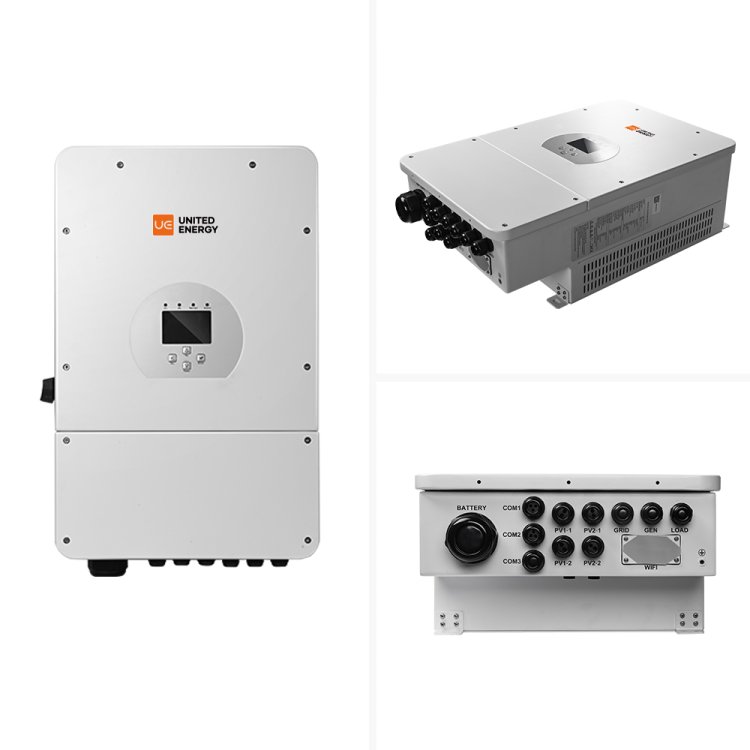Powering Commercial Energy Needs: A Deep Dive into the 8KW Three Phase Inverter
Share this Post to earn Money ( Upto ₹100 per 1000 Views )

As energy consumption increases across industries, the need for efficient, stable, and scalable power solutions becomes more urgent. In this context, the 8KW Three Phase Inverter has become a cornerstone technology in modern solar and renewable energy systems.
This type of inverter is specifically designed to convert direct current (DC) into alternating current (AC) across three phases, which is essential for powering commercial, industrial, and large residential setups. With an output of 8 kilowatts, it strikes the right balance between compact design and high performance, making it an ideal choice for medium-sized solar systems.
What Makes an Inverter ‘Three Phase’?
Unlike single-phase systems that carry electricity through a single live wire and a neutral, three-phase systems use three alternating currents that reach peak voltage at staggered intervals. This design allows for:
-
Higher power output
-
Stable load distribution
-
Greater efficiency in power transmission
A three-phase inverter like the 8KW model is capable of interfacing with such systems, making it suitable for environments where electrical demands are too high or complex for single-phase solutions.
The 8KW Output: Why Size Matters
The 8KW capacity of this inverter means it can handle up to 8000 watts of solar power input, which is typically sufficient for:
-
Medium-sized commercial offices
-
Agricultural applications (e.g., irrigation systems)
-
Workshops and light manufacturing units
-
Large residential homes with high energy usage
This size strikes a good middle ground—not too small to be ineffective for serious applications, and not too large to require significant space or investment.
Core Benefits of Using an 8KW Three Phase Inverter
Let’s explore why this inverter model is gaining attention among solar professionals and system designers.
1. Efficient Energy Conversion
Modern three-phase inverters can achieve efficiencies above 97.5%, meaning very little energy is lost during the DC to AC conversion. This ensures better return on investment and lower energy waste.
2. Compatibility with Grid and Battery Systems
Most 8KW inverters are hybrid-ready, allowing you to connect them both to the public power grid and to energy storage systems. This flexibility supports:
-
Net metering
-
Load shifting
-
Emergency backup power
3. Long-Term Cost Savings
By generating your own electricity and feeding excess energy into the grid, you can reduce or even eliminate your power bills over time. The 8KW inverter is often at the heart of such cost-effective setups.
4. Remote Monitoring and Control
Thanks to integrated smart technologies, you can monitor energy production, detect faults, and update firmware remotely via mobile apps or web dashboards.
Key Technical Specifications
Although details may vary between brands, typical specifications for an 8KW three-phase inverter include:
| Specification | Typical Range |
|---|---|
| Max Efficiency | 97.5% – 98.3% |
| Input Voltage Range | 200V – 1000V DC |
| AC Output | 8KW, Three-Phase, 400V AC |
| Protection Ratings | IP65 or IP66 (outdoor rated) |
| Cooling | Natural convection or fan-assisted |
| Communication | RS485, Wi-Fi, Ethernet, Modbus |
| Certifications | IEC 62109, VDE-AR-N 4105, UL 1741 |
These features ensure not just high performance but also compliance with international safety and quality standards.
Common Use Cases
1. Office Buildings
In commercial office environments, where lighting, HVAC systems, and computers run constantly, the 8KW inverter provides reliable power while helping reduce energy bills.
2. Farms and Agriculture
Pumping systems, cooling units, and automated feeding systems benefit from the consistent energy supply a three-phase inverter delivers.
3. Retail and Warehousing
For shops, small supermarkets, and logistics warehouses, where consistent uptime is critical, these inverters offer reliable performance and cost savings.
4. Off-Grid Solutions
In remote areas where grid access is limited, combining the 8KW inverter with solar panels and battery storage can create a sustainable and independent energy system.
Installation and Maintenance Tips
Proper Sizing
Make sure the solar panel array matches the inverter’s input capacity. Oversizing slightly (e.g., 8.5–9KW of panels) is often acceptable and can improve performance in low-light conditions.
Cooling and Ventilation
Install the inverter in a shaded area with good airflow. Overheating can reduce efficiency or even damage internal components.
Firmware Updates
Use the manufacturer’s monitoring tools to check for firmware updates, which may improve performance or resolve bugs.
Annual Servicing
Even though most inverters are low-maintenance, it’s wise to have a professional inspect the system annually to ensure safety and optimal operation.
Challenges and Considerations
While the 8KW three-phase inverter offers many advantages, there are a few challenges to consider:
-
Initial Cost: The upfront investment may be higher than smaller inverters or single-phase units.
-
Grid Compliance: Local utility regulations may dictate how your inverter can interact with the grid.
-
System Complexity: Adding batteries or smart energy management systems can increase the technical complexity.
Working with a certified solar installer ensures these issues are handled correctly during the planning and installation stages.
Top Brands to Consider
If you're in the market for an 8KW three-phase inverter, here are some reliable brands:
-
SMA: German-engineered, known for robust build and long-term reliability.
-
Fronius: Offers advanced monitoring tools and long warranties.
-
Huawei: Smart features, AI-powered optimization, and hybrid readiness.
-
Sungrow: Cost-effective and globally trusted.
-
Solaredge: Optimized for use with power optimizers and energy storage.
Compare warranties, local support availability, and compatibility with your solar panel and battery setup before choosing.
Conclusion: Is an 8KW Three Phase Inverter Right for You?
If your property or facility has high energy demands and is equipped for three-phase power, then investing in an 8KW Three Phase Inverter is a smart move. It delivers efficient energy conversion, supports hybrid functionality, and is scalable enough to handle future energy needs.
Whether you're looking to cut energy costs, reduce your carbon footprint, or gain energy independence, this inverter type serves as a reliable backbone for a wide range of solar energy systems.













